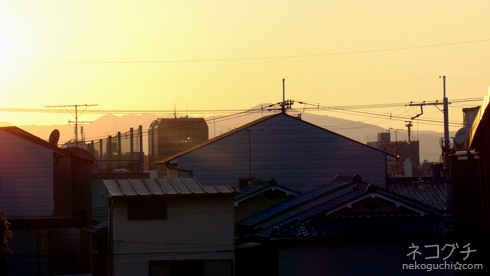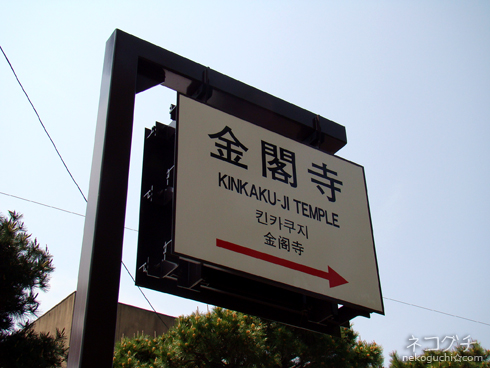I went to Kyoto on the 3rd day of my trip. This is the 2nd time I’ve been there actually and I think I prefer it more than Tokyo. Kyoto is ooooold – and she sweeps a sense of nostalgic ancient history through its streets. That’s what I love about it. It’s exactly a well blended mix of classic & modern culture,just less haste & waste. Established in 794, Kyoto retains its unique position as the country’s historical and cultural heart and believe it or not, its the birthplace of the spirit and technology of traditional Japan.
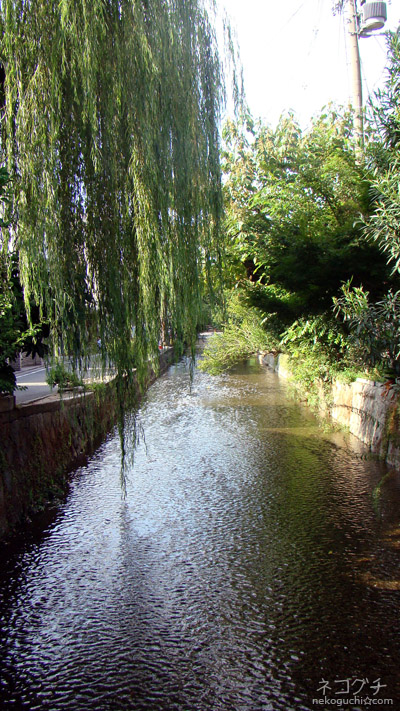
I reckon more than 30 million tourists a year visit Kyoto (Ok I just plucked that figure from the sky), but there is usually so much to do that crowds tend to form only at the most popular sites and I, guilty as named, went back to the exact same spots from my first trip there.
The major attractions are mainly Kyoto Imperial palace, Nijo Castle, Daitokuji Temple, with its many sub-temples, Ginkakuji, Kinkakuji, Kiyomizudera and Heian Shrine. I find the Kinkakuji an art simply because well, its plastered in GOLD! If you’re into Feng Shui, gold or metal is lacking this year so I reckon paying a trip to that temple wouldn’t hurt (even though deep down I feel there’s like totally no connection what-so-ever). . . I just needed a convenient excuse for a return trip. LOL.
Kinkaku-ji (金閣寺, Golden Pavilion Temple)
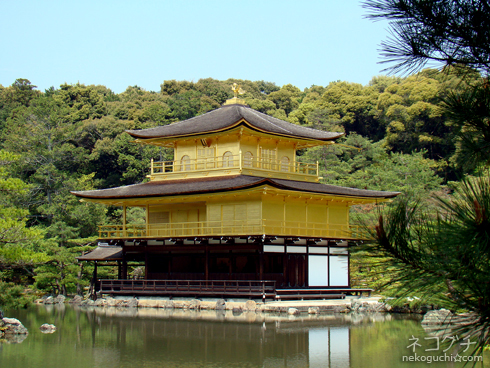
The Golden Pavilion Temple, aka Kinkakuji (金閣寺), was built by the shogun Ashikaga Yoshimitsu for his retirement in 1394. That made me wonder how many now can afford to build a pavilion just for retirement. Anyhow, the temple is topped with a bronze statute of a phoenix and covered in gold leaf (and I had a notion to scrape some off for safe-keeping and good luck. LOL)
The brochure says that it was built with intention to illustrate harmony between Heaven and Earth, though I personally have no idea which symbolises which.
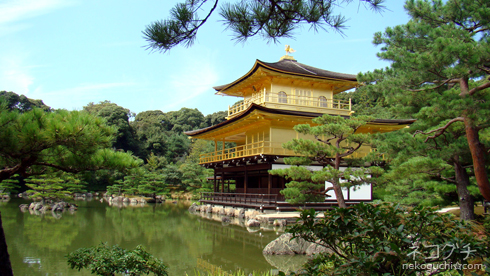
Since the Kinkakuji was built by Yoshimitsu as an escape for retirement, upon his death, his son turned the building into a temple known as the Rokuonji 鹿苑寺, Deer Garden Temple as part of his father’s wishes. This was the previous name of Kinkakuji and it wasn’t collaged with deer heads – just in case you’re wondering.
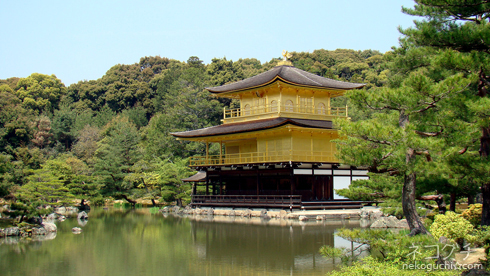
Kinkakuji is three stories tall, has some windows and some doors. ( ´゚д゚`)えー? The first floor is built in the Shinden style of the Heian palaces, while the 2nd floor resembles a temple hall and enshrines a statue of Kannon Bosatsu. The 3rd floor is the hall of Zen containing nothing but a statue of a jodo-style Amida, the Buddha of the western Paradise, or Pure Land. (Ok I didn’t write this. Some book did and I forgot which -.-!)
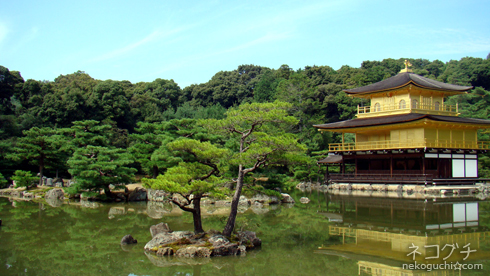
Kinkakuji sits in the middle of a pond said to be a mirror pond called Kyōko-chi. Around it, many small islands and stones emerge, representing the Buddhist creation story. This, Wikipedia said! LOL.
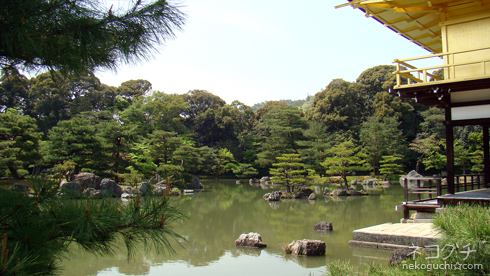
In 1950, the pavilion was given a char-grilled by a mentally disturbed monk. (Oh Dear!) Anyway some guy managed to rebuild it and plastered it with Gold Leaf to make it all nice and sparky again.
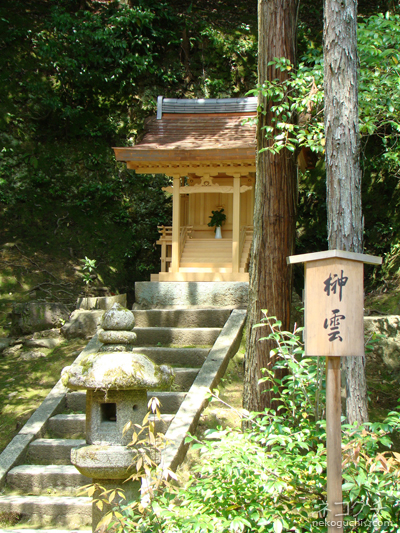
Moving behind the temple and away from horde of human activity, a flight of stone steps leads up to the Shin-un Shrine that is dedicated to the Shinto deity Kasuga Myôjin, said to be the God of Temple Grounds.
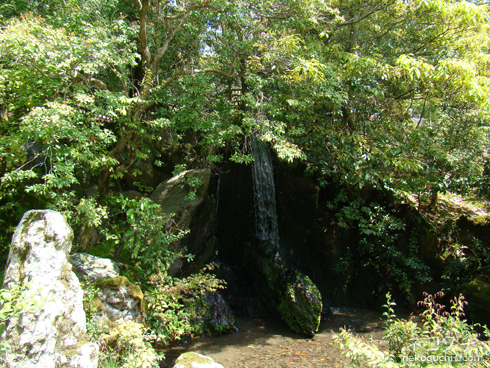
Following the path, there is a chibi waterfall called Ryumon-baku (Dragon’s Gate) and underneath the falls is a rather large diagonally “placed” stone known as the Carp Stone. Ancient Chinese folklore said that the carp who leaped beyond the waterfall will turn into a dragon and so many carps tried but I’m not sure if more ended up in frying pans instead. ι(´Д`υ)アツィー
Steps to Heaven?!?
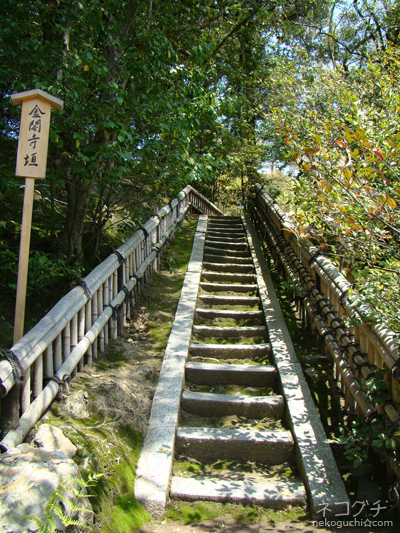
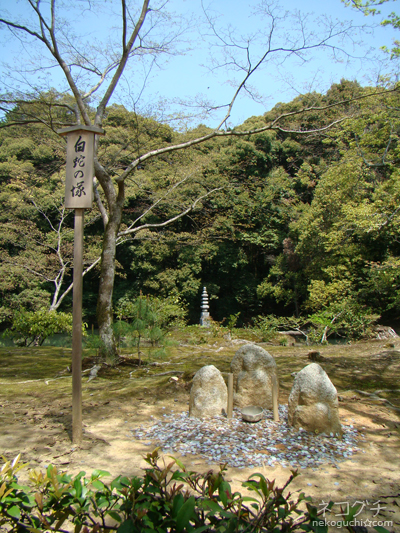
Further up is another small pond called Tranquility Pond. Within that, is a chibi island with a pagoda known to be Hakuja no tsuka (White Snake’s Lair) and on the isle, are the images of the four Buddhas. This pagoda is dedicated to the white snake or dragon that controls the water supply of the temple grounds. People worshipped it for the fact that it never dries up even in periods of drought.
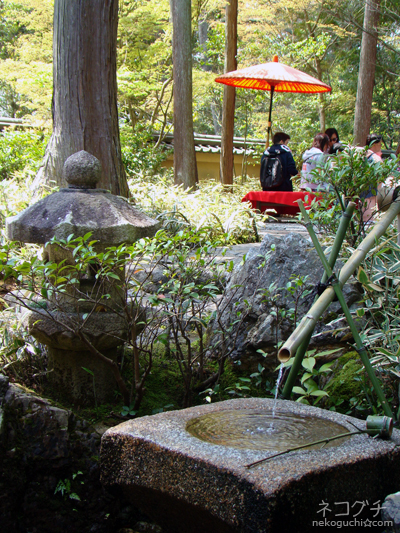
Passing through the souvenir store, Sekka-tei tea house, said to be built in honour of a visit by Emperor Go- mizuno-0 in the 17th century, can be located. It was claimed that another fire set it tumbling to the grounds in 1874. I didn’t stop there for tea. I was anxious to head on to the next touristy spot :D
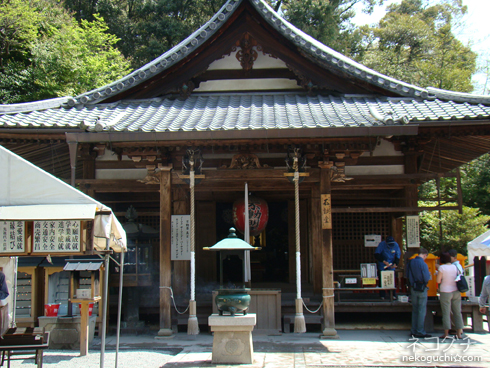
Before exciting the whole site, you’ll find a small temple to Fudo Myo-o, the God of Fire and Wisdom and many more stores for you to shop & stock up.
It was already past noon by the time I finished touring the site. Thinking that Gold & Silver made the best combi, I jumped onto the bus and made my way to the Silver Pavilion Temple.
